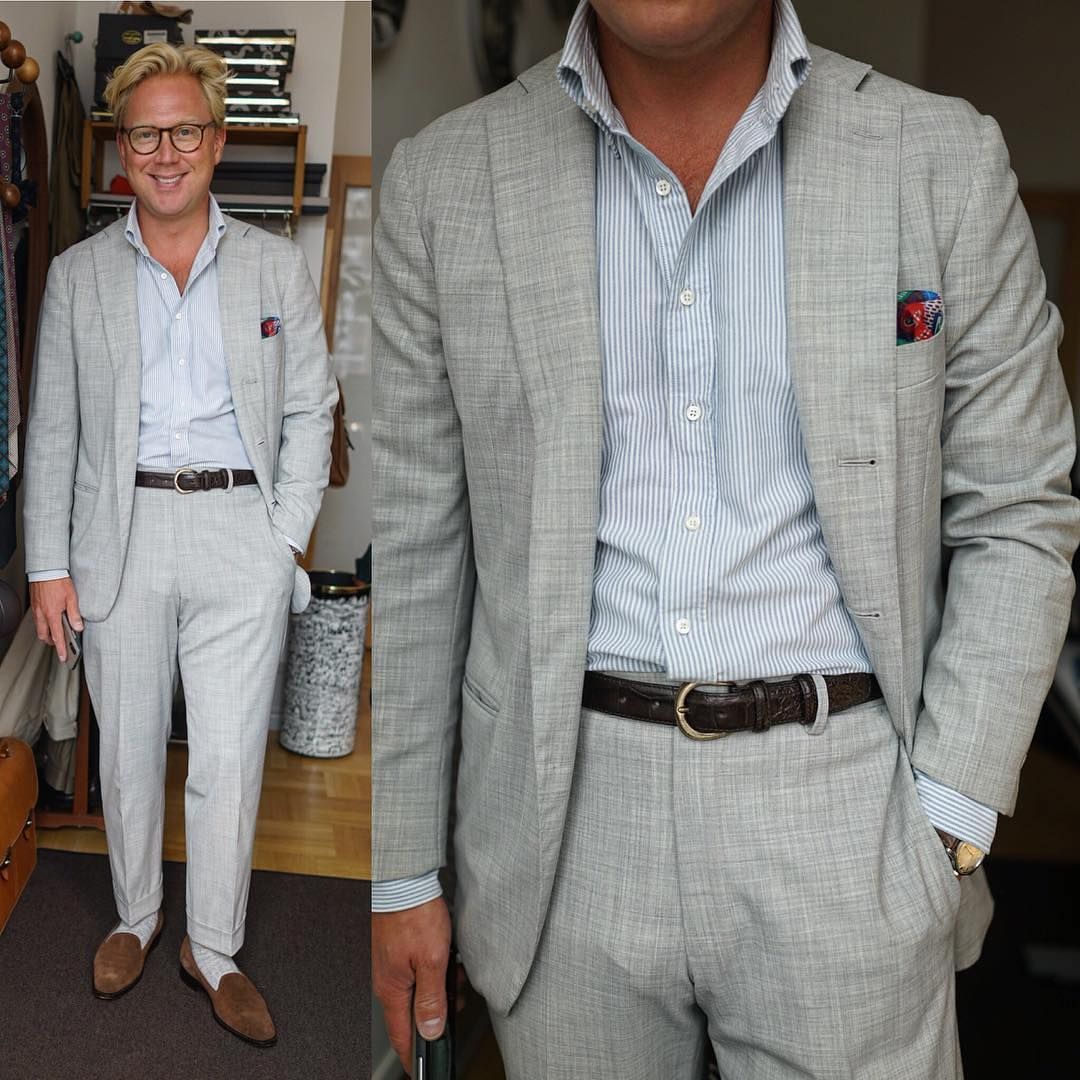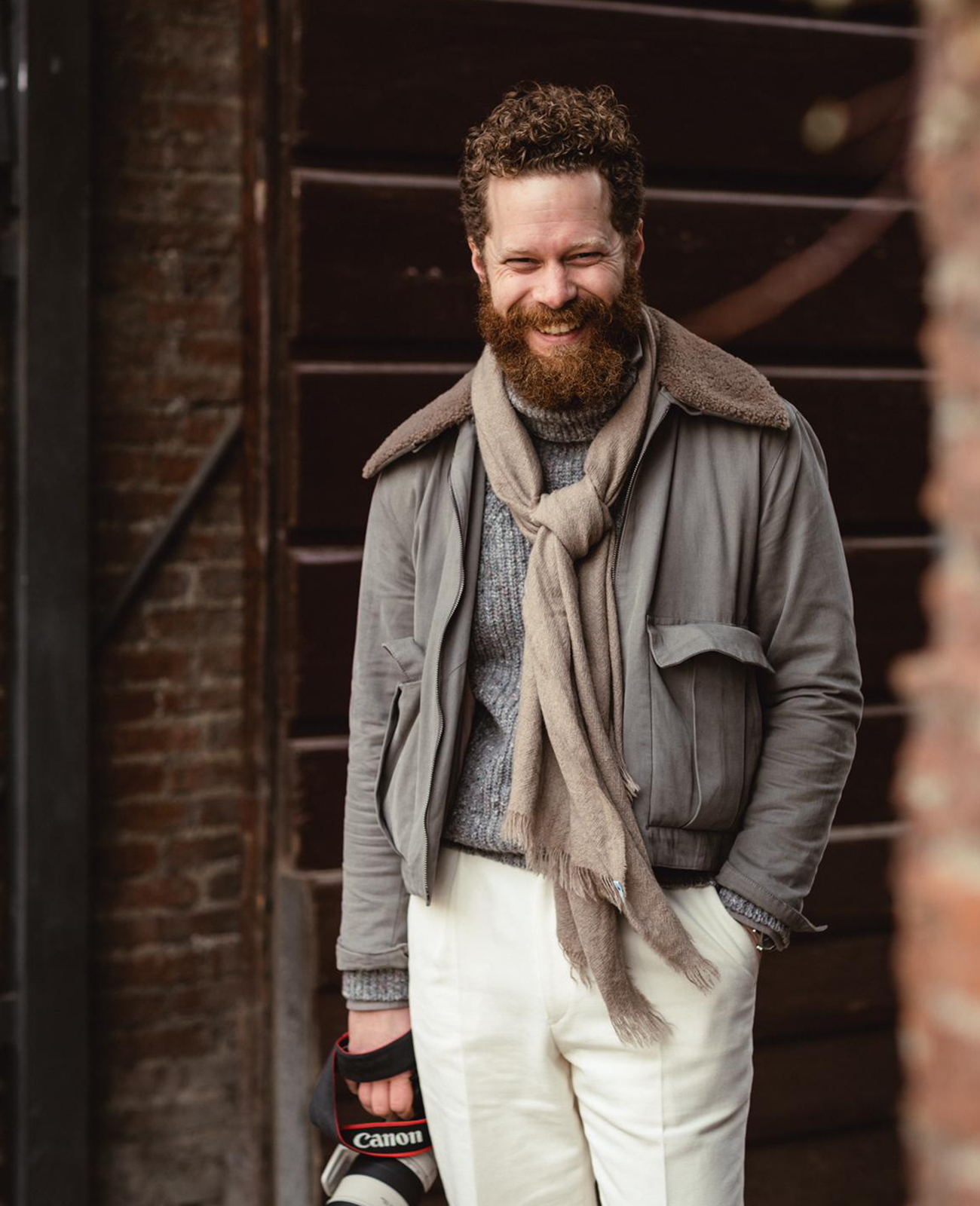
Andreas aka @flannels_and_tweed, a master of the well-lit self-shot portrait.
It’s tempting to make building style a mechanical exercise, especially when you first start paying attention to your clothes. Find a model to emulate, acquire the right clothes, get the right fit, mix well and… you still look pretty much like your old self, just in better clothes. Most of the men and women we consider style icons get there because of other traits — being really, really, really traditionally good looking, for example; being otherwise photogenic, which often means looking comfortable or confident in yourself; or standing out in their fields for other reasons (and radiating the confidence that goes along with that).
I’ll leave building and practicing confidence to the self-help bookshelf, but you can take some steps to make yourself look better in photos. Whether you’re taking outfit-of-the-day photos for the ‘gram (and tagging them #ptoman) or just know you’re going to be in a situation where you’re going to be photographed, like a wedding, you can work with the factors in your control to make a better-looking photo. It’s natural to feel like this is a little vain; and it’s fun to poke at obvious Instagram artifice. But if you’re going to put effort into how you present yourself, you might as well put a little effort in to be sure your best self is documented.
I talked with London-based photographer Jamie Ferguson (aka JKF_man), who’s shot street style and lookbooks for Permanent Style, The Rake, and others, to get a few tips on how to look your best in photos. A real key is looking as natural as possible — one of the foremost reasons candid street style photography tends to connect with people is that subjects are doing something other than posing (of course, guys at Pitti Uomo may be well aware they’re being photographed, but, importantly, they’re engaged in doing something else).

Jamie is himself a pretty good subject.
Jamie is a professional photographer, so part of his job is to relieve any potential awkwardness by building a rapport with his subjects, many of whom are models or at least people who are photographed often. When it comes to the rest of us, the do’s and don’t’s are a little different.
- One universal key is good light. Whether propping a phone or using a tripod, “set up next to/near a window or space with nice, natural light,” says Jamie. Natural light tends to look better than artificial, unless you’re a master of flash photography. In general, you want an even level of light across the subject (you) so the camera isn’t over-adjusting for bright spots or shadows.
- Perspective matters. Having a camera at waist level will likely not be the most flattering, especially close up with a wide-angle lens, like most phones have. If possible, shoot from closer to eye-level.
- Avoid assuming the straight-backed, stiff-armed pose many of us strike when we get photographed, especially when wearing tailoring. Ignore the impulse to pose like a product photo and “have a lean up against a wall or doorway, cock the leg and cross the arms. Solves the problem of what to do with your hands and creates a nice shape with the body.
“To be honest almost doing anything with your hands rather than just standing with them at your side, e.g., in pockets, play with a phone, adjust your cuffs, look at your watch, etc.” - Don’t necessarily look at the camera. “I always feel looking directly at a camera is pretty tricky to do if you’ve not done it regularly or aren’t working with someone. Looking to either side can be an easy solution.” Of course, if you’re going to be in group photos, don’t be the only dude looking away from the camera.
- Jamie’s final tip: “Don’t take it too seriously. I love anything that lets the clothes move and is light hearted. Smiling and laughing is great.”







